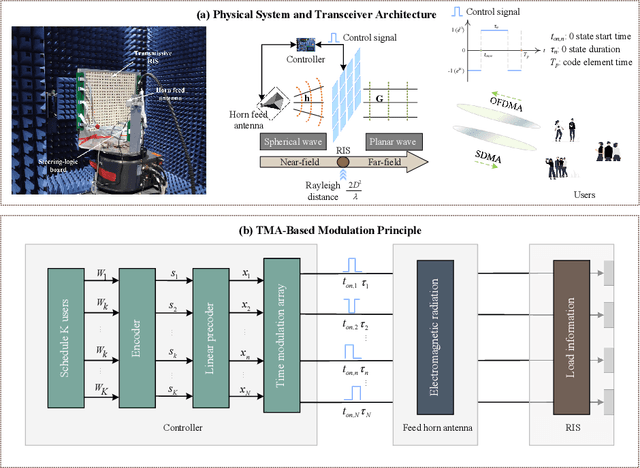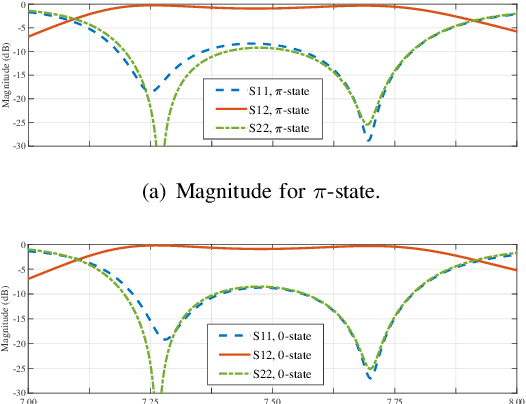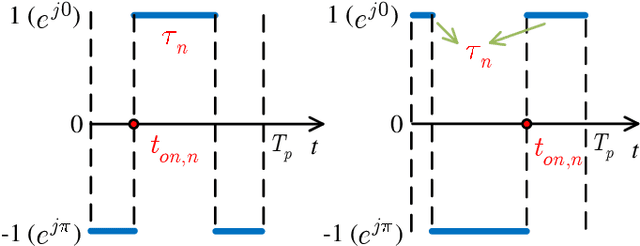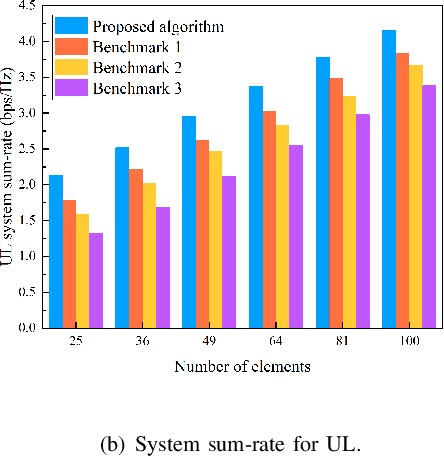Xudong Bai
Space-Time-Modulated Wideband Radiation-Type Programmable Metasurface for Low Sidelobe Beamforming
Dec 06, 2024



Abstract:Programmable metasurfaces promise a great potential to construct low-cost phased array systems due to the capability of elaborate modulation over electromagnetic (EM) waves. However, they are in either reflective or transmissive mode, and usually possess a relatively high profile as a result of the external feed source. Besides, it is difficult to conduct multibit phase shift in metasurfaces, when comparing with conventional phased arrays. Here, we propose a strategy of space-time modulated wideband radiation-type programmable metasurface for low side-lobe beamforming. The wideband programmable metasurface avoids the space-feed external source required by its traditional counterpart, thus achieving a significant reduction of profile through integration of a highefficiency microwave-fed excitation network and metasurface. Furthermore, through introducing space-time-modulated strategy, the high-accuracy amplitude-phase weight algorithm can also be synchronously carried out on the first harmonic component for low side-lobe beam-scanning. Most importantly, adaptive beamforming and generation of interference null can further be created after analyzing the harmonic component characteristics of received signals.
Transmissive RIS Enabled Transceiver Systems:Architecture, Design Issues and Opportunities
Aug 24, 2024



Abstract:Reconfigurable intelligent surface (RIS) is anticipated to augment the performance of beyond fifth-generation (B5G) and sixth-generation (6G) networks by intelligently manipulating the state of its components. Rather than employing reflective RIS for aided communications, this paper proposes an innovative transmissive RIS-enabled transceiver (TRTC) architecture that can accomplish the functions of traditional multi-antenna systems in a cost-effective and energy-efficient manner. First, the proposed network architecture and its corresponding transmission scheme are elaborated from the perspectives of downlink (DL) and uplink (UL) transmissions. Then, we illustrate several significant advantages and differences of TRTC compared to other multiantenna systems. Furthermore, the downlink modulation and extraction principle based on time-modulation array (TMA) is introduced in detail to tackle the multi-stream communications. Moreover, a near-far field channel model appropriate for this architecture is proposed. Based on the channel model, we summarize some state-of-the-art channel estimation schemes, and the channel estimation scheme of TRTC is also provided. Considering the optimization for DL and UL communications, we present numerical simulations that confirm the superiority of the proposed optimization algorithm. Lastly, numerous prospective research avenues for TRTC systems are delineated to inspire further exploration.
 Add to Chrome
Add to Chrome Add to Firefox
Add to Firefox Add to Edge
Add to Edge